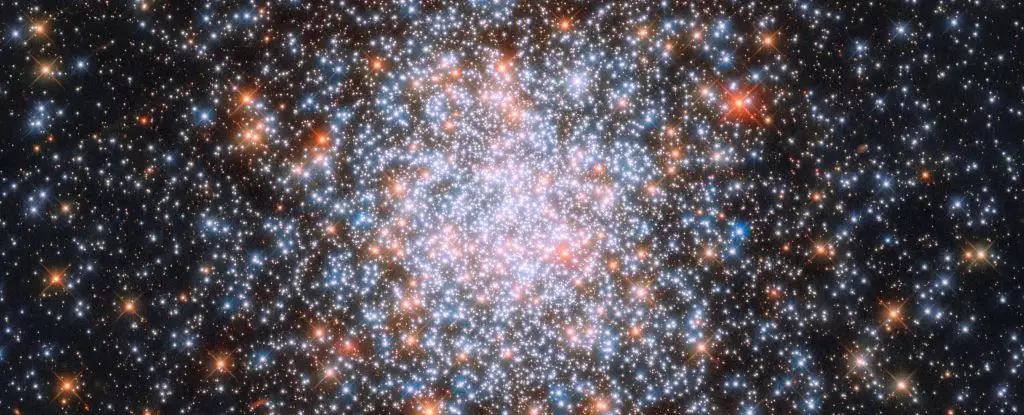The cosmos’ infancy is perhaps the most tantalizing frontier in modern astronomy. We know that the Universe began in darkness, a dense sea of primordial particles slowly cooling and coalescing. Yet for decades, the direct evidence of the very first stars—their masses, lifespans, and influence—remained frustratingly elusive. Thanks to groundbreaking theoretical work and the forthcoming power of sophisticated radio telescopes, astronomers are now on the verge of decoding faint whispers from the Universe’s earliest epoch. This endeavor does not merely promise to detect the first stars; it aims to reveal their elusive characteristics through a subtle radio signature known as the cosmological 21-centimeter line.
The Silent Cosmic Era: Why the First Stars Remain Hidden
The period after the Big Bang, roughly 100 million years in, is often referred to as the “cosmic dark ages.” During this time, neutral hydrogen gas filled the expanding cosmos, but stars had yet to ignite in significant numbers to illuminate the void. Why has it been so challenging to pinpoint these first-generation stars? One prevalent hypothesis suggests these primordial stars were gargantuan—ranging thousands of solar masses—with fleeting lifetimes. Such colossal stars would have burned bright and died young, leaving barely any direct trace for contemporary telescopes to observe.
The problem is compounded by the fact that ancient light from these stars is tremendously redshifted, stretched by the Universe’s expansion to wavelengths hard to detect. Unlike later stellar populations whose photons have been studied extensively, these earliest beacons remain hidden in an observational blind spot. The cosmos’ early composition—mainly hydrogen and helium relics from the Big Bang—does, however, offer an indirect window through the behavior of neutral hydrogen itself.
The Power of the 21-Centimeter Line: A Cosmic Fingerprint
Neutral hydrogen atoms emit radiation with a wavelength of 21 centimeters when their electrons change spin states. This phenomenon, while faint, is a powerful tool to map the Universe’s vast hydrogen reservoirs. Crucially, this 21-centimeter signal is sensitive to the presence and influence of early stars. These stars emitted ultraviolet (UV) and X-ray photons that interacted with surrounding hydrogen, altering the intensity and distribution of the signal.
Astrophysicists now appreciate that the properties of the first stars—especially their masses—would significantly influence these early UV and X-ray emissions. When massive stars conclude their rapid lives, their remnants become neutron stars or black holes. These objects, particularly when in binary systems, are potent sources of X-rays that further shape the hydrogen environment. Without accounting for this complex X-ray interaction, previous models missed key effects on the 21-centimeter signal.
Simulating the First Light: A New Theoretical Breakthrough
Recent research led by Thomas Gessey-Jones and collaborators has broken new ground by integrating X-ray emissions from the remnants of massive stars into simulations of the 21-centimeter signal. This approach offers a holistic interpretation, blending early cosmic conditions with the lifecycle of the first stars. These simulations provide astronomers with distinct observational signatures—patterns in the radio waves—that would signify the mass distribution and evolution of primordial stellar populations.
This is no trivial accomplishment. Prior studies either simplified or neglected the complex interactions stemming from star deaths, resulting in incomplete or potentially misleading predictions. By rigorously modeling ultraviolet and nuanced X-ray feedback, these researchers deliver a blueprint for interpreting future data from powerful telescopes like the Square Kilometer Array (SKA) and REACH (Radio Experiment for the Analysis of Cosmic Hydrogen). These instruments, stationed in Australia and South Africa, boast the unprecedented sensitivity required to detect these ancient signals.
Implications Beyond Detection: Understanding Cosmic Evolution
Detecting the 21-centimeter signal shaped by the first stars is not just about identifying their presence. It is about peeling back layers of cosmic history to understand the processes that drove the Universe from an opaque fog into the vibrant, structured cosmos we inhabit today. The mass and energy output of these stars dictated the pace at which galaxies and larger cosmic structures formed.
Moreover, the intense radiation from the demise of massive stars may have played a role in reionizing the Universe, a crucial phase transition that made it transparent to light. Without firm observational constraints, many of these mechanisms have remained speculative. The new work hints that by decoding subtle variations in the 21-centimeter line, astrophysicists can unlock details about stellar populations and their feedback on cosmic matter.
Looking Forward: The Dawn of Radio Astronomy’s Golden Age
We stand at a pivotal moment where theory and technology converge. The meticulous modeling of early universe signals reveals a clear path for targeted observation and interpretation. Though no unambiguous detection has been made yet, the roadmap for success is more refined than ever. When first hints of this faint radio signal emerge, they will represent a tremendous leap in our understanding—transforming abstract predictions into tangible glimpses of the Universe’s origin story.
It is both humbling and thrilling that the answers to some of the greatest cosmic questions lie hidden in a whisper-thin radio murmur spanning billions of years. Astronomers are on the cusp of translating these signals into a narrative of the very first stars, transforming our understanding of cosmic dawn from guesswork into an evidence-based chronicle.


Leave a Reply